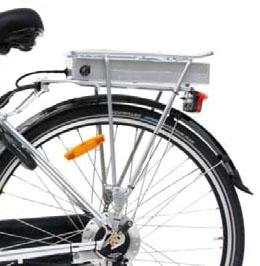BATTERIES
The main indicator of a connection problem is any delay in the throttle response, this due to the software being very sensitive to any resistance at this point. The first action to correct this is to thoroughly clean both the brass posts and the battery clips (soon to be nickel plated) with a suitable cleaning fluid. I've tried switch contact cleaner, but it's inclined to attract road dust etc so is not suitable. The best liquid for this purpose is isopropyl alcohol which you can get from a dispensing chemist, 100 ml will last a very long time. Squeeze the pad of a cotton bud with pliers to slim it down, lightly moisten it with your chosen cleaner and thoroughly clean the contact ridge area of the battery clips and the brass posts on the battery tray.
Now unscrew the battery fuse and remove it completely. Insert a small crosshead screwdriver into the battery clips and tighten the clip securing screws. Make sure you don't skew the clips at an angle as this would leave only point contact on the posts. Then make sure the clips are squeezed in sufficiently to ensure a good grip on the brass posts. You may find a screw is turning all the time together with it's hidden internal nut, in which case you'll need to carry out the following repair.
First re-check that you have removed the battery fuse. Then remove the two battery base plate securing screws as shown.
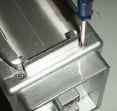
Then slide up the base plate, and remove it as shown below. Never under any circumstances open the main casing of a Li-ion battery. There are no user serviceable parts inside and there is a real risk of explosion if it's mistreated in any way.
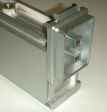
Remove the pvc insulating tape from one connector at a time to expose the clip securing nut, and with both screwdriver and either small spanner or pliers, tighten the clip securing screws properly. You might wish to be certain of good connections at this stage by removing the screws and abrading all contact surfaces with a fine file or fine emery cloth. Then cover each connector nut with fresh pvc insulating tape if necessary, align the wires in the channel and refit the baseplate to the battery.
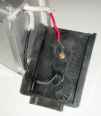
If your battery is ok for a while but connection problems crop up intermittently which can be cured by replugging the battery, the grip of the battery clips may need to be tightened since the clips do relax over time. To ensure a good contact, thin sorbo rubber inserts can be used to reinforce the pressure. First find a suitable piece of rubber, in the following illustrations I'm using a slice from a soft rubber doorstop.
Using a craft knife or similar, cut four tapering wedges of rubber, then trim them to 8 mm by 8 mm, and around 1.5 to 2 mm at one end, tapering to nothing at the other as you'll see in the examples at the right.
Now insert the wedges behind each face of the battery clips as shown, with the thick ends behind the contact ridges of the battery clips. The end result should allow the battery to be placed in the bike without huge force but with some increase in resistance. Take care not to have the inserts too thick, causing the posts to buckle the clips, the aim is to supplement the clip pressure rather than multiply it.


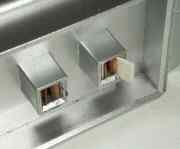
Cutting out on the road has several possible causes, but the most likely cause will be a connection problem as described above. Other than that, bikes with NiMh batteries might only suffer the fourth problem listed below. Lithium Ion batteries are potentially more fragile than NiMh and therefore need much greater protection, so if you have ensured that the connections are not the problem, the cause could be any one of the following. The first mainly applies to the Torq model.
1) Using the bike outside of it's specification.
2) Battery fault.
3) Controller fault.
4) Wiring connection fault.
Using some of the links on the left will lead you to repair procedures. Only follow the advice given if you are completely confident of your abilities since no responsibility can be accepted for any problems arising.
The latest batteries for the Torq are very much better in every respect, for details on these see the link on the left.
1) The UK specification Torq has a high geared motor and a lowest derailleur gear of 58" with the tyre diameter accurately specified, which is really a middle gear. The manual realistically specifies the Torq for use on hills up to 10% (1 in 10) with rider assistance, and this is particularly important with Li-ion batteries. If the bike is used on steeper hills, all of the additional input should come from the rider and the throttle may need to be held at less than full output to avoid the overload safety cut out operating. It follows that a battery cutting out under these circumstances can perform well in the lower geared Quando on the same hill with the same pedal effort.
2) If the cutout operates when overload is unlikely, such as with sustained full throttle plus pedal effort on moderate slopes with the bike at or above 17 mph (Torq), 13 mph (Quando) when the current will be below the permitted limit, the battery could be faulty. Again, this would be very rare on an NiMh battery, the Li-ion's protections making it more vulnerable to the overload cutout operating prematurely.
3) As in (2) above, the controller could also be suspect in these circumstances.
4) Other than physical damage to the harness, the most likely cause of a wiring connection fault is damp getting into a connection point and corroding the connector metals. Once having located the fault, most likely in the bottom bracket area, the obvious answer is to clean and remake the connection, ensuring it stays waterproof. For this, see the wiring page for details on effective sealing methods.
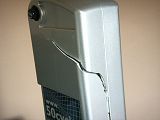
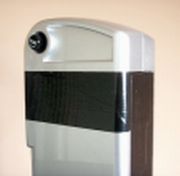
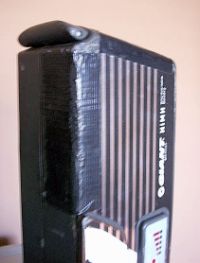
The eratic performance of the Battery Meter is one of the commonest complaints, not just on the eZee models but on all electric bikes I wish all manufacturers would do as the long established electric bike makers like Heinzman and Giant do, stick the meter where it can't be seen when riding so it doesn't worry people. You see, there is no way that a battery's electrical content can be measured by a meter, the only measure we have for the content is watt/hours of capacity, so it can only be measured by using up the content over time. The meters we have just measure the very gradual small voltage drop as the battery content is used up, and that's a roughly good enough measure when the bike is standing still. Trouble is, when on the move and we open the throttle wide, the current drain into the motor also drops the voltage, so that's recorded on the meter as well, nothing to do with the battery content. The equivalent on a car is when we plug the starter with headlights on, the headlights dim due to the voltage drop the motor causes. Also, when the weather is cold, that drops the battery voltage as well, affecting the meter.
As an example of the problem, the Li-ion batteries are nominally 37 volt, the NiMh are 36 volt. If I put the NiMh that I also have into the Torq fully charged, I can go onto the hill outside my home and get the red light on immediately, simply because it's started with a slightly lower voltage point, nothing to do with what's in the battery. So my advice on this is, forget the meter when on the move, better still, put a strip of black PVC insulating tape over the LEDs, and just check the level when standing still. Even better still, find out your normal range, starting with an assumption of around 13 miles and gradually taking a bit more until you find the cut out point near to home. Then zero the odometer each time you charge and use the mileage reading to know what's left in the battery. That doesn't eratically bounce up and down all the time.
So you can see now how pointless these meters really are on the handlebar, What you desire isn't possible since batteries are chemical devices, not electrical. To emphasize that point, older readers will remember the way charge was checked on lead acid batteries, drawing off electrolyte into a hydrometer to check it's specific gravity, i.e. chemical checking since electrical checking of charge contained isn't possible. The charge in a battery is no longer electricity as we know it that can readily be measured electrically, it's a change in chemical state.
Had a battery accident and cracked the case? Not to worry, the contents are virtually always unharmed.
The first picture on the right shows an eZee Li-ion battery after enjoying the hospitality of the Royal Mail, rather disastrous looking I think you'll agree.
Since the damage was confined to one case half only, a repair was simply a matter of using the right type of heavy duty outdoor grade adhesive cloth tape, also known as "gaffer" tape or "duct" tape.
Squeezing together the case halves to close the gap, a horizontal strip holds that position, while a vertical tape strengthens the join area. By good fortune the repair lines up with the top tube of the rear frame and is scarcely noticed when on the bike.
Below is a Giant Twist battery which a failed bungee launched from the bike's carrier at speed downhill in July 2003, splitting the casing along two seams and around the corner. In this case, a clean hot soldering iron was used to melt together the halves around the corner area to waterproof it, and then the same duct tape applied over front and top edges. Here it is in 2007 still giving sterling service, proving the efficacy of this repair method.
The tape is widely available from DIY centres etc, and also from Maplin or their shops, listed as Heavy Duty Cloth Tape, part no: N57BH for a 50metre roll.
Although duct tape is usually black, other colours including silver are available from some sources. If the cosmetics on an eZee or similar silver coloured battery concern you, silver tape listed as "Duck" tape is currently available (January 2007) from Staples UK, telephone 0800 14 14 14. The catalogue part number is 7M-366 182. The image on the right is of the same eZee battery repaired with that.
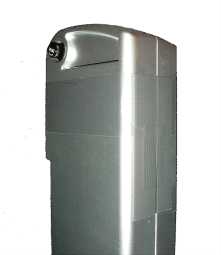
16.11.2010
.
Much has changed since the earliest lithium batteries which struggled to meet the needs of the Torq's powerful system. Chemistries and internal management have greatly improved and an owner trying one of the latest batteries finds a very large performance improvement, particularly with the hill climbing and endurance.
The standard battery has increased from 10 to 14 Ah now, but smaller sizes are available at lower costs for short range users. Two chemistries and constructions are now available in some sizes, Lithium-polymer (Li-poly) and Lithium-iron-phosphate,
(LiFePO4). In addition, a second battery is now possible, mounted in the special rear carrier shown at the right and coupled into the main one. This can bring the capacity up to 28 Ah, nearly three times the original and capable of probably four times the range due to the improvements in the batteries and the benefits of running from two batteries at once.
